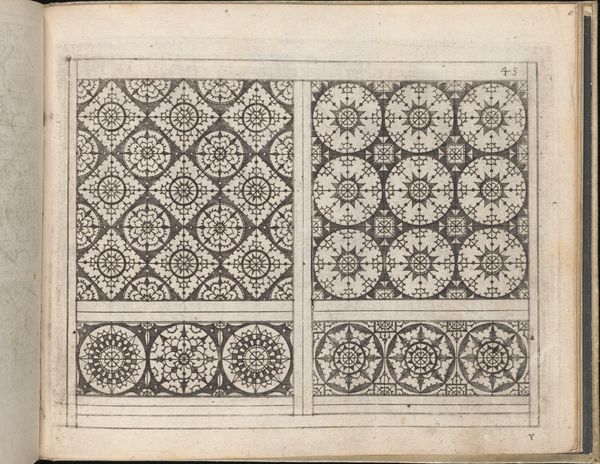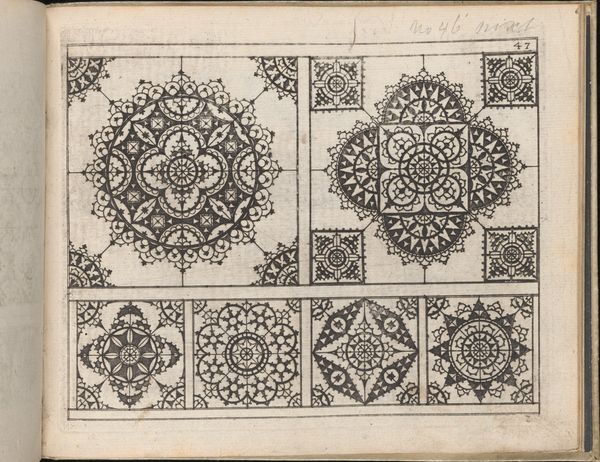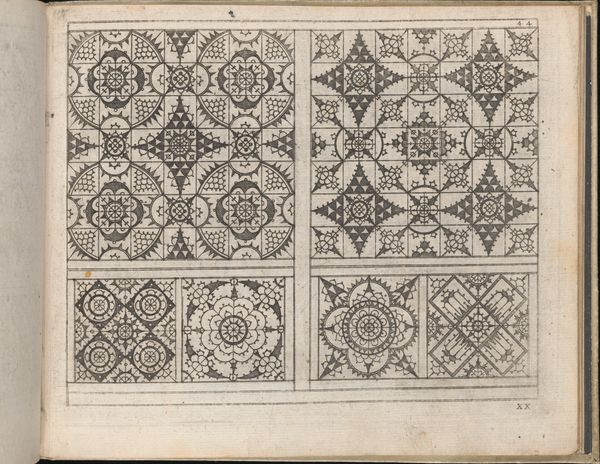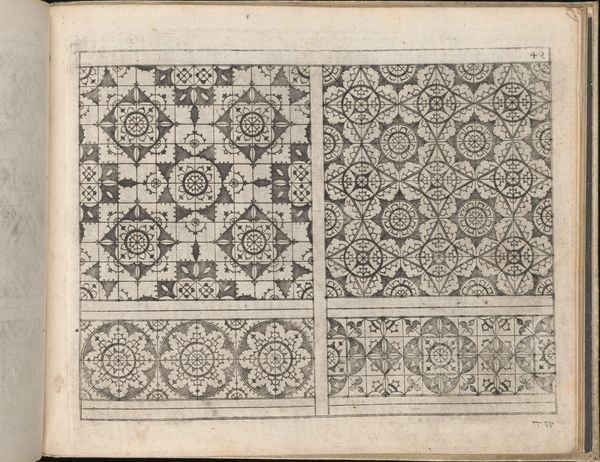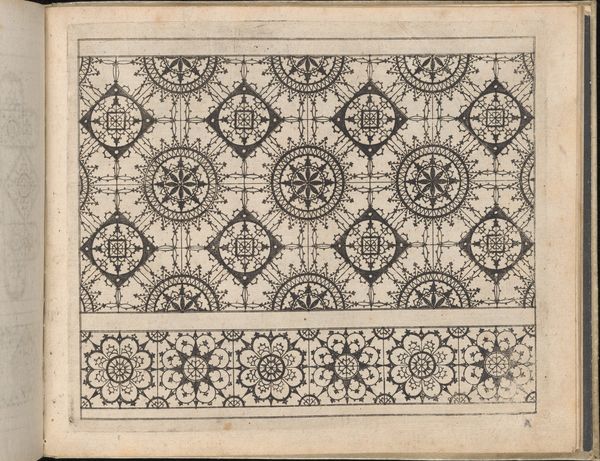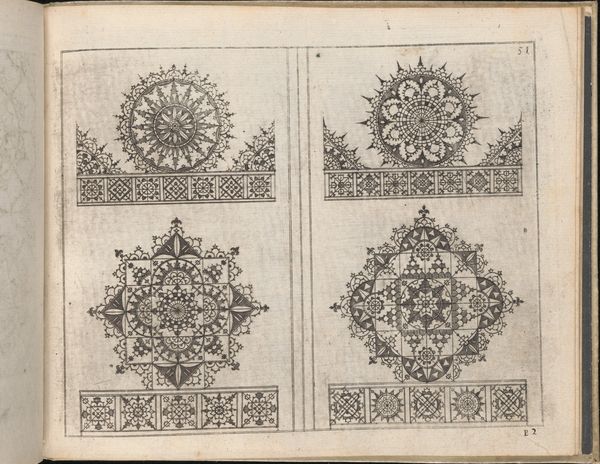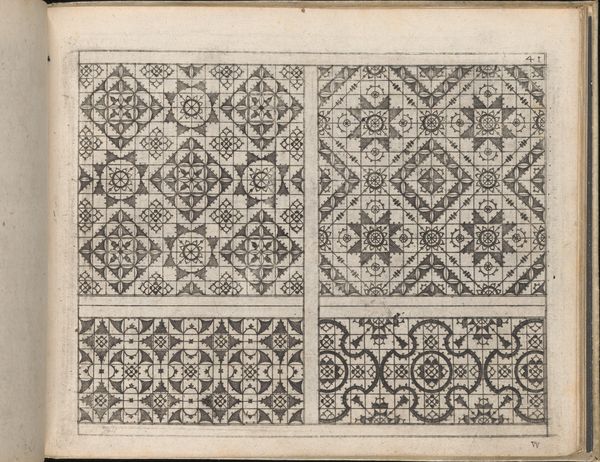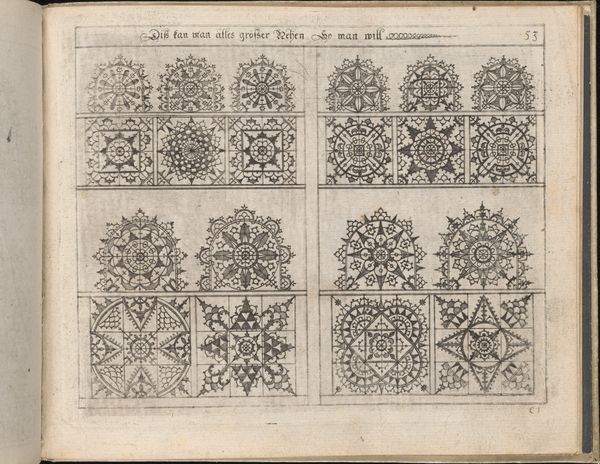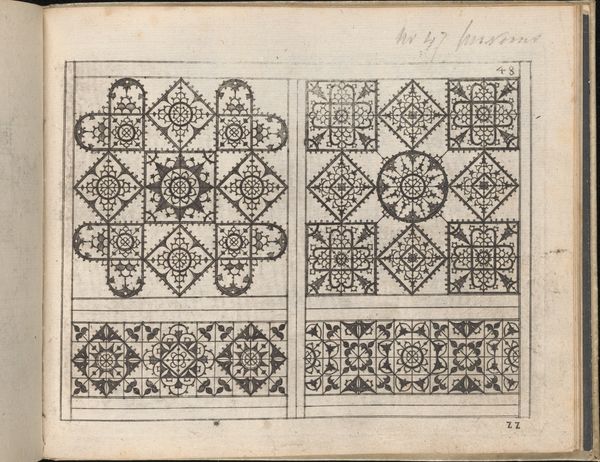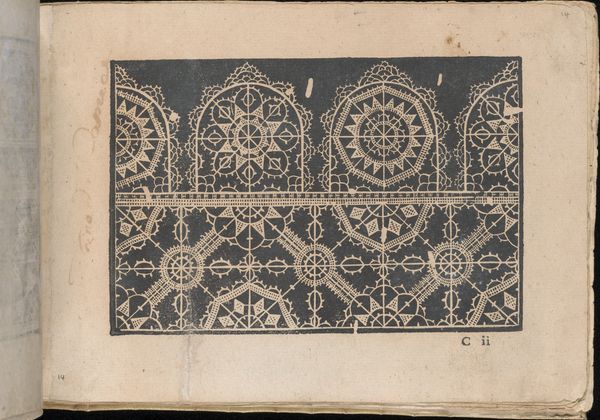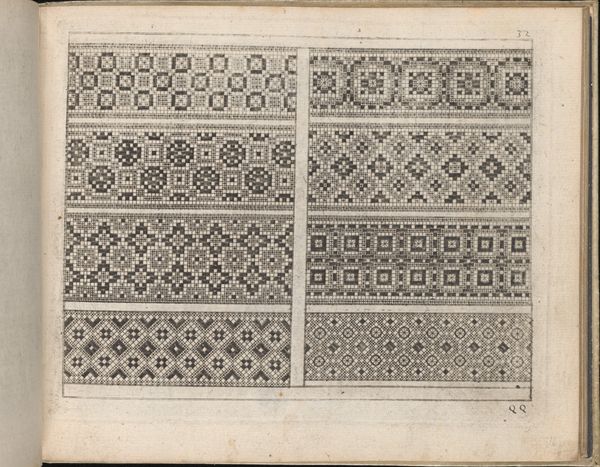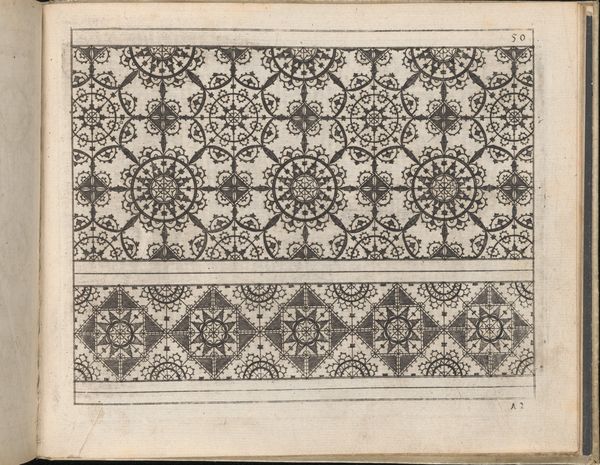
drawing, print, ink, engraving
#
drawing
# print
#
pattern
#
11_renaissance
#
ink
#
geometric
#
engraving
Dimensions: Overall: 5 11/16 x 7 1/16 x 3/4 in. (14.5 x 18 x 1.9 cm)
Copyright: Public Domain
Curator: This detailed engraving is a page from Johann Sibmacher's "Newes Modelbuch in Kupffer," printed in 1604. The work is currently housed at the Metropolitan Museum of Art. Editor: It's astonishingly intricate! So many geometric shapes and repeating motifs crammed onto one page. Almost dizzying, like staring into a kaleidoscope. Curator: Absolutely. These model books served as guides, or pattern books, for artisans – think embroiderers, lacemakers, and other needleworkers – providing a repertoire of designs to draw from. It demonstrates the increasing availability of art and design ideas at the time. Editor: So, a kind of proto-Pinterest for 17th-century craftspeople? I notice the symbolic language at play – these aren't merely decorative designs. Take that crowned heart, for instance – undoubtedly resonant with ideas of love, devotion, perhaps even religious fealty. Curator: Indeed, the symbols often carried complex social and religious meanings. These weren't just pretty patterns; they communicated status, allegiance, and moral values, depending on how and where they were employed. The very act of recreating these patterns was itself an expression of cultural belonging. Editor: The act of dissemination of art itself through the prints… Fascinating how a single page embodies so many facets of Renaissance life. It reminds us that even seemingly simple visual elements were charged with deeper significance. Curator: A vital insight, wouldn't you agree? Next time, try to think of craft objects in terms of wider historical issues and cultural ideals, to better appreciate a broader political view about it!
Comments
No comments
Be the first to comment and join the conversation on the ultimate creative platform.
